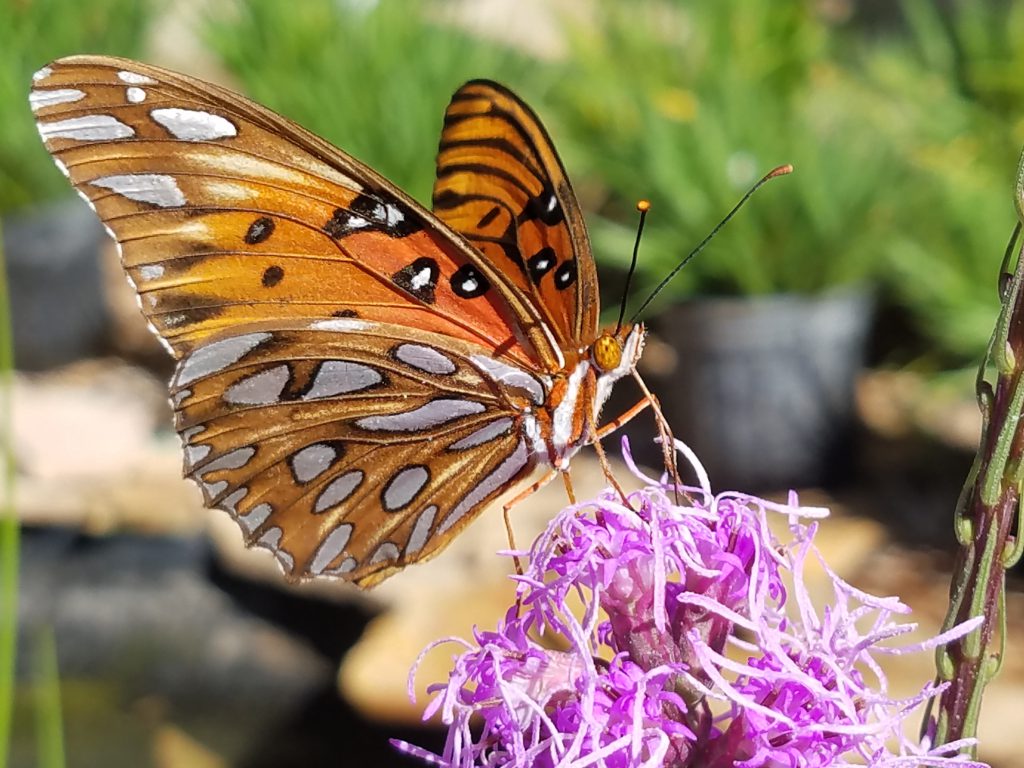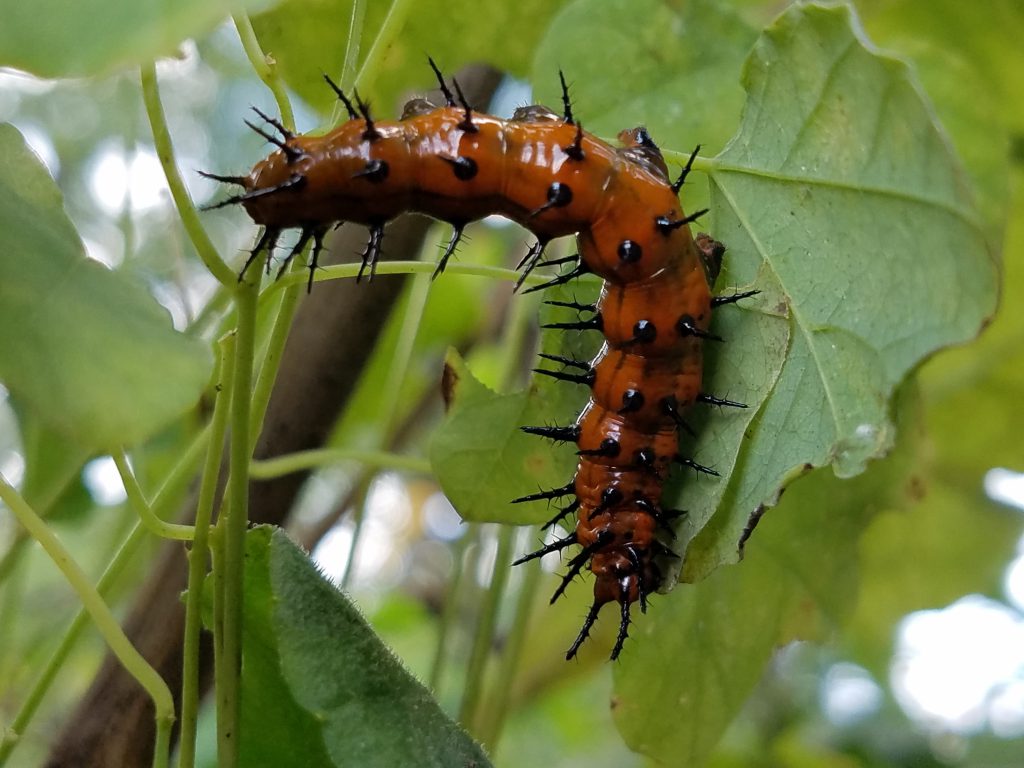Migratory animals are no stranger to our neck of the woods. Every year, Florida is host to countless creatures as they make their way from one place to another in search of food, nesting sites, or just a change of scene. From hummingbirds to manatees, it can be interesting to watch the annual cycle of nomadic animals.

One of the smaller wayfarers we see year-round, but especially when they migrate south in the fall, is the gulf frittilary butterfly, Agraulis vanillae Linnaeus. They spend the warmer months of the year in the southeastern United States, following frost-free weather as temperatures drop. During the winter, they enjoy the sunshine of peninsular Florida.
The gulf frittilary is a medium-sized butterfly, with a wingspan of 2½–3½ inches. Females are larger than males. It is bright orange in color, with black markings on the top of its wings and silvery-white spots on the bottoms. In its larval form, it is also bright orange in color, with dangerous-looking spines along the length of the caterpillar. Despite their appearance, these do not sting.

If given a choice its larvae will feed primarily on passionflower (Passiflora incarnata and related species), but have also been seen snacking on buttonsage. Toxins from passionflower concentrate in the larvae and butterflies, making them poisonous to predators – much like the monarch butterfly and its host plant, milkweed. The insect’s bright coloration serves as a warning that it is not to be eaten.
Keep an eye out for these beautiful butterflies and consider planting a passion vine in your landscape to help them out. The caterpillars may eat the leaves, but in giving them a feast you’ll help them grow into adult butterflies. Once they do mature, they are fantastic at pollinating many of our native wildflowers, further beautifying the world around them.
For more information see the University of Florida’s article here.
- Quercus Geminata, the Sand Live Oak - November 20, 2025
- Snakes of the Panhandle - October 10, 2025
- Ganoderma, a Deadly Disease of Palms - September 4, 2025
